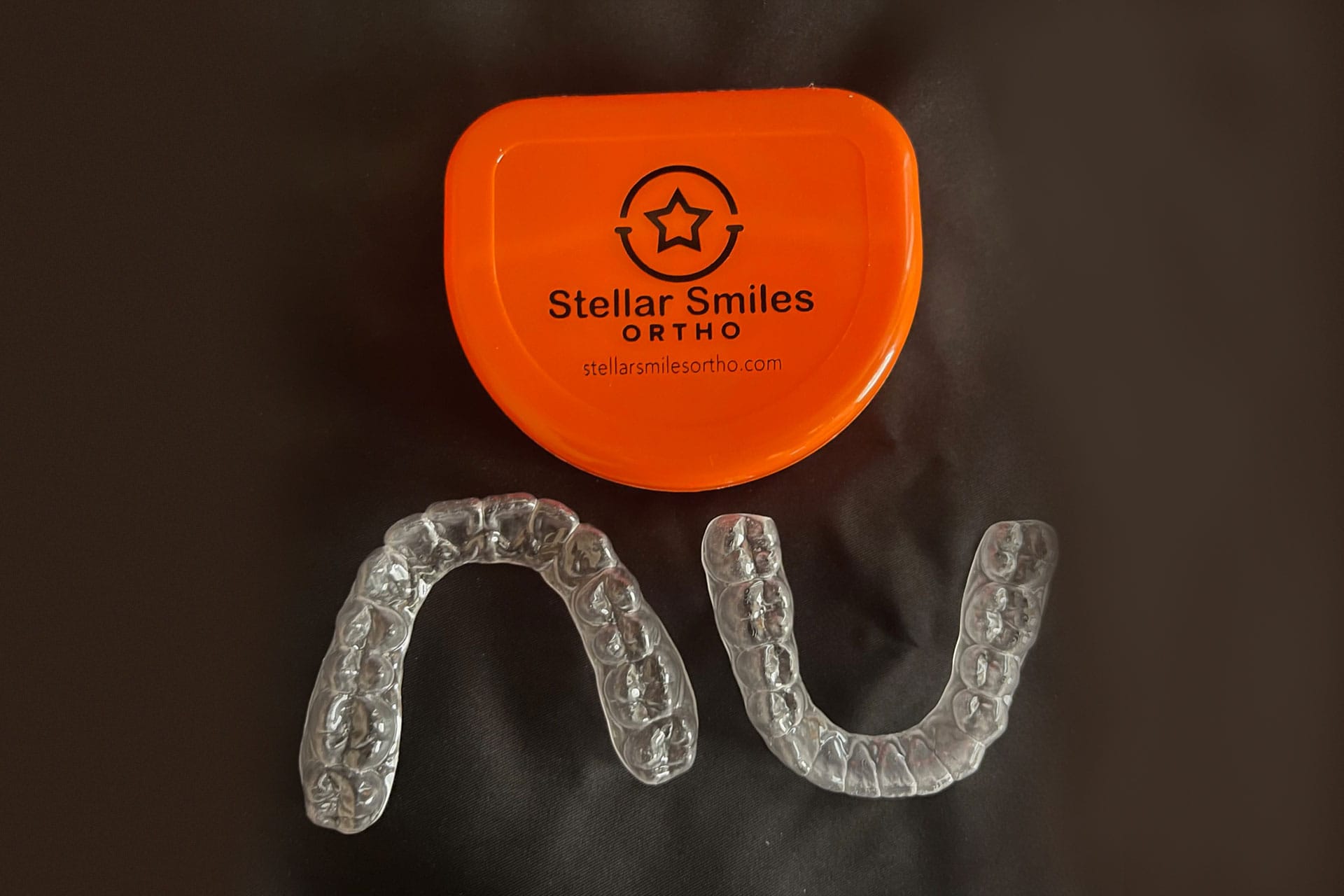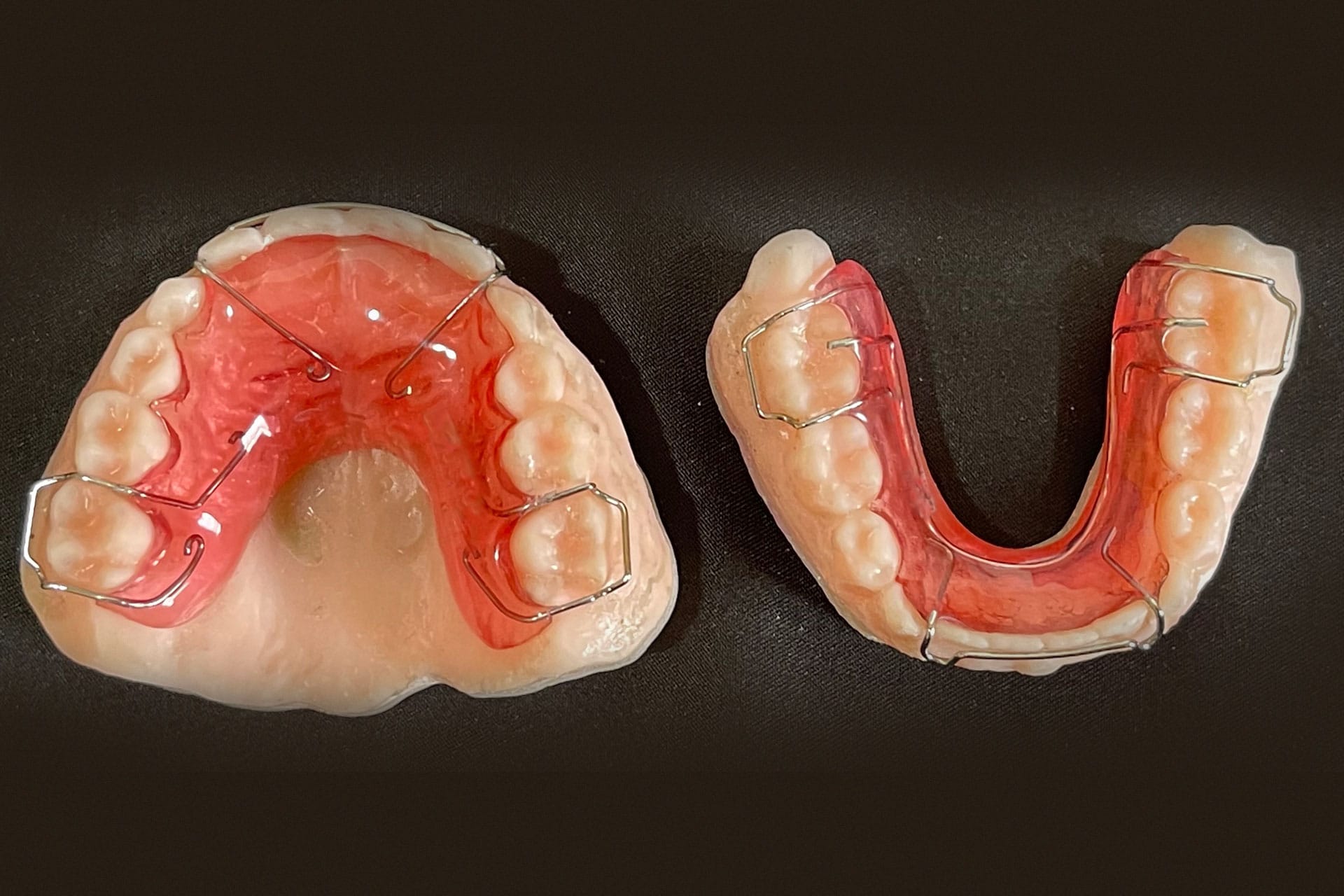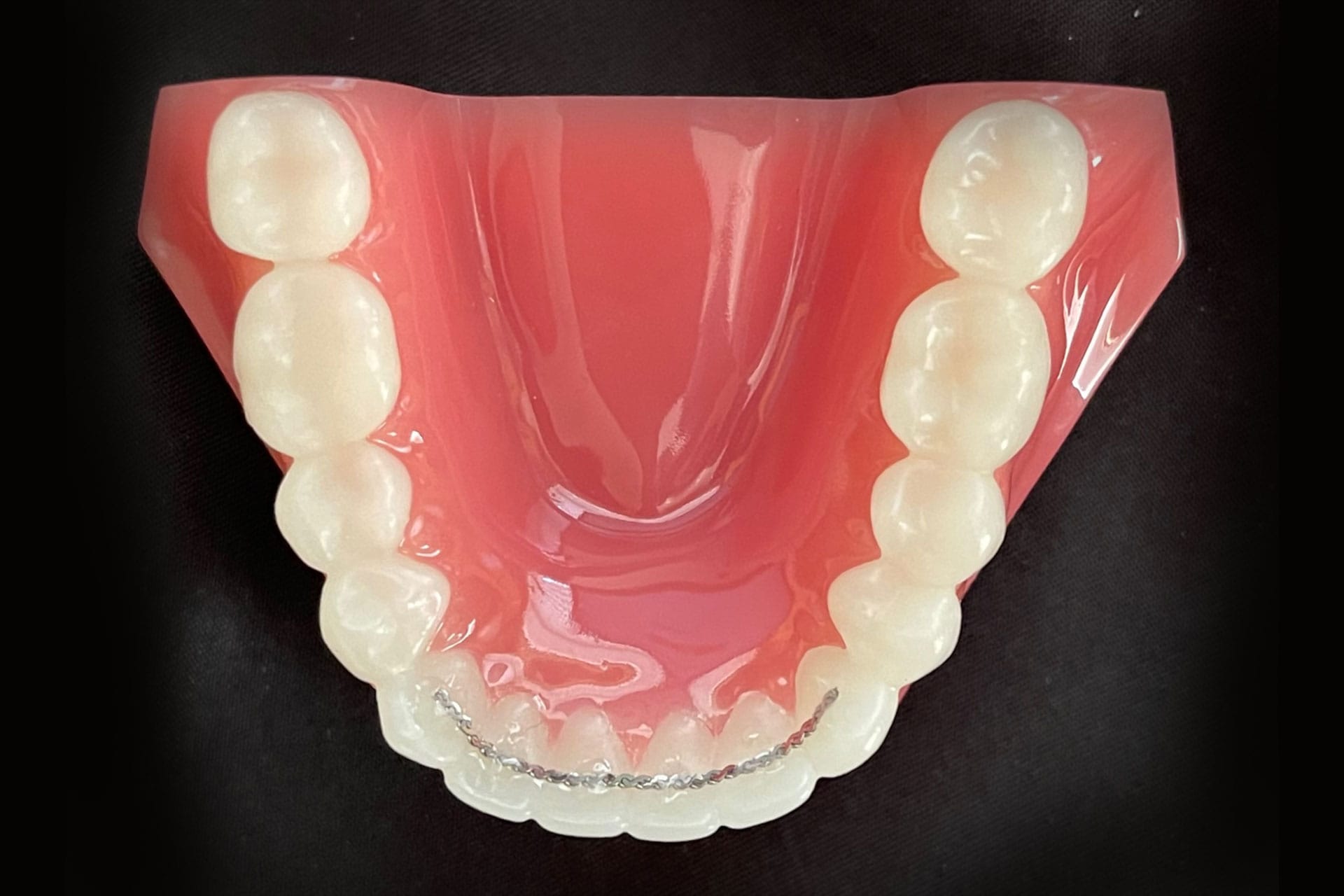Why Do I Need A Retainer?
Retainers are super important. After your braces or aligners have made your teeth nice and straight, they need to stay in their final position. Why? Because after tooth movement, everything surrounding the teeth, like the gums, fibers, and bone, needs time to reform and harden. And this may take 6 – 12 months. As you chew, grind, and or clench your teeth, this makes your teeth move throughout your life. And shifting teeth can lead to crooked teeth. So, a retainer keeps your teeth straight and protects your smile investment. You put a lot of effort into reaching this important stage. And remember, your body changes your whole life, so your teeth change too.
How Is A Retainer Made?
Every single retainer is custom-made to fit your teeth. We scan your teeth with an iTero scanner; a digital intraoral scanner that produces quick colorized images. It is a state-of-the-art digital scanning system that eliminates the need for traditional alginate impressions – that old-school gooey stuff that takes a long time to set in your mouth. Even if you tried your friend’s retainer (gross) it would not fit – please take our word for it.

How Long Will I Have To Wear My Retainers?
Do you like your new smile? Oh yes! So, wear your retainers for as long as you want your teeth straight and that stellar smile. Make wearing retainers part of your daily routine, like brushing and flossing your teeth before going to bed. Sometimes forever sounds really good!
What If I Lose My Retainers?
If you lose or break your retainer, or if your dog just had it as a yummy snack, call us immediately. This is well known to happen on a cruise when you are far from port or on an awesome Friday night. Yup. No one can tell how fast your teeth will relapse and you want to avoid re-treatment. A good option is to get a backup retainer so you have one always ready to go saving you a trip.
Types Of Retainers
There are 2 basic types of retainers. Depending on the kind of orthodontic issue you had, we may suggest removable or permanent/glued-in retainers or a combination of the two. So here they are:

Clear Plastic Retainers
REMOVABLE clear plastic retainers, also known as transparent retainers, invisible retainers, aesthetic retainers, Essix retainers, Vivera retainers or Zendura retainers. This type of retainer looks very similar to Invisalign.
These are made from a clear thermoplastic material or a flexible polyester mix or polyurethane. Here’s a mouthful: Vivera® retainers are made from methylene diphenyl diisocyanate and 1, 6-hexanediol, or Propylene.
Pros:
- Clear – they look “invisible”
- Fit your teeth like a glove – a plastic one – so the teeth stay exactly where they need to
- Easy to take on and off – even in a public place
- Thinner so they can be even more comfortable
- Thinner so they can impact speechless
- Can protect your teeth and enamel from grinding and wear
- Easy to clean
Cons:
- Clear plastic may stain over time
- Thin – may crack if mishandled
- Thin – may wear if you are a grinder or a clincher
- Can distort or warp with heat
- Cannot be adjusted

Traditional Plastic Retainers
REMOVABLE traditional plastic retainers, as known as Hawley retainers, wire retainers, hard plastic retainers, acrylic retainers, and acrylic plate retainers. Made out of a combination of acrylic and metal wires. The metal wire runs along your front teeth and also hooks on your back teeth. The acrylic section sits either on the roof of your mouth or on the inside of your lower teeth. It was introduced in 1919 by Dr. Charles Augustus Hawley, an orthodontist from Avery, Ohio.
Pros:
- Can be adjusted
- Made of sturdy materials – difficult to distort
- Doesn’t stain easily
- The acrylic part can be color customized
- Easy to clean
- Will last for many years with good care
Cons:
- Thicker in the palate and tongue area – may cause a lisp
- Metal wire is visible on front teeth
- Metal wire can bend if not handled carefully
- The biting surfaces are not protected from grinding

Permanent Retainers
Permanent retainers, as known as fixed retainer, glued retainer, cemented retainer, wire retainer, bonded retainer. It’s a custom fit metal or alloy wire that is glued to the back of your teeth (upper or lower or combination).
Pros:
- It’s always there – you don’t have to worry about forgetting or losing it
- Cosmetically pleasing – it’s hidden behind your teeth
- Doesn’t stain easily
- Easy to talk with it in place
- Durable – can last for many years
- Holds teeth together that before were spaced
Cons:
- Difficult to clean
- Flossing is tricky
- Beware of hard and sticky foods
- Does not protect your teeth and enamel from grinding and wear
- Does not hold the back teeth straight
When Should I Replace My Retainers?
It depends on what type of retainer you have, how much TLC you show it, and if you grind or clench your teeth. Also, there are unforeseen cases when you lose them wrapped in a napkin or your dog runs off with them. So here are some guidelines:
- If you notice small cracks or tears: these affect the strength of the retainer and also allow for bacteria to fill the crack and grow (yuk)! This can lead to bad breath and plaque buildup leading to possible cavities and gum disease
- If plastic is clouded or very stained: If your retainers seem to have a white or yellow film on it – those are calcium deposits from your saliva. Bacteria love living in that so you have to either scrub to get rid of it or get a new one. That layer will no longer allow the plastic to hug and hold your tooth properly.
- If the wire is bent or broken: a wire is the only support system the tooth has to stay straight. So, if you have a bent wire – the tooth will “bend” or move with it and become crooked. If the wire has broken – it is no longer holding the tooth properly.
Do Retainers Hurt?
When your braces come off OR your aligner therapy is complete your teeth are still wiggly. The retainers are there to stabilize them and will feel snug. So sometimes, you may feel a little discomfort from the teeth – so make sure you wear your retainers as prescribed by the Doctor.
You may feel some discomfort if:
- Your retainer breaks: then it is not properly holding your teeth and pushing them unevenly
- Your retainer bends/warps: then it is not properly holding your teeth and pushing them unevenly
- Your retainer cracks: you may feel that crack with your tongue, lips or cheeks.
- You don’t wear your retainer enough: if your teeth have shifted you will feel more than normal pressure. Remember – the retainer will always match your straight teeth.
- You lose your retainer: if your teeth have shifted you will feel more than normal pressure. Remember – the retainer will always match your straight teeth.
- The glue on the permanent/bonded retainer breaks off: if your teeth have shifted you will feel more than normal pressure.
How To Care For My Retainers?
Do’s
- Place in a plastic case with your name, address, and phone# on the inside when not wearing it. If it’s not in your mouth – it’s in the case!
- Insert and remove VERY CAREFULLY, first from the back.
- Take out when eating.
- After eating brush your teeth.
- To clean your Retainer/Aligner: use a toothbrush, cold water, and liquid
Dont’s
- Don’t put in a napkin/tissue. Someone may throw it out.
- Don’t put it in your pocket without a case.
- Don’t leave around pets. They love chewing on them.
- Don’t flip, flick or play with it in your mouth.
- Don’t leave in the sun, boil it, or microwave it. (Yes, that happened) d hand soap. Make sure you rinse them very well. You can use denture/retainer cleaner a few times a week to keep them sparkling.















